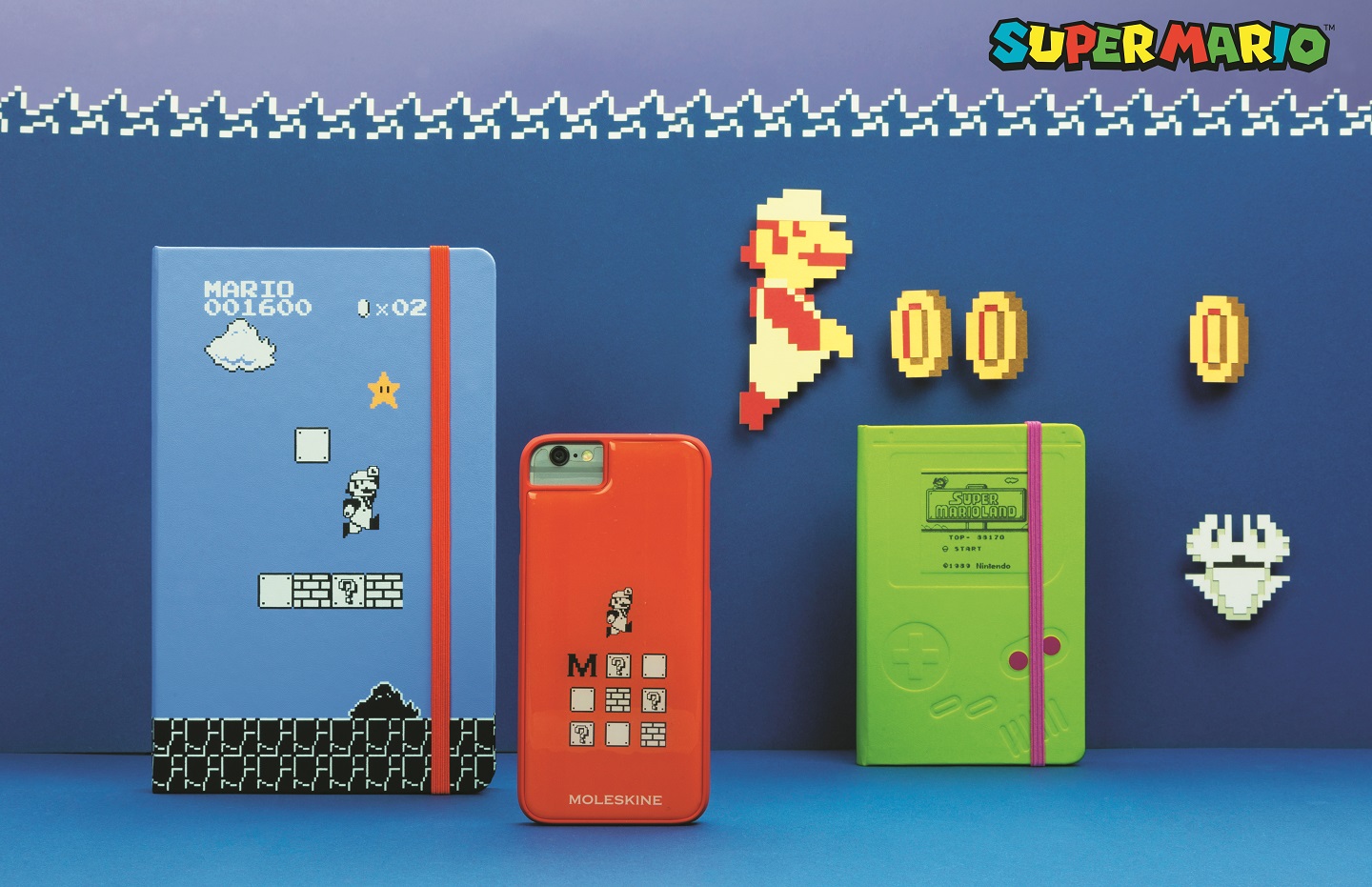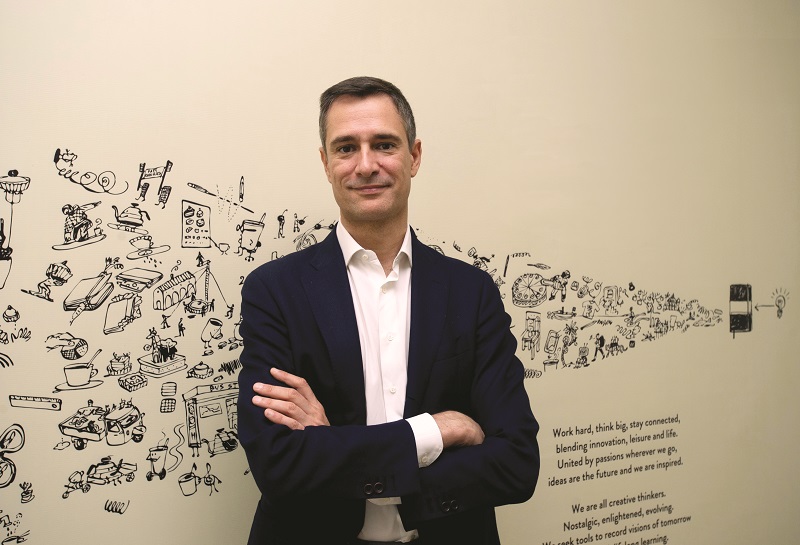
The limited-edition Super Mario Moleskine notebook (Photo: Moleskine)
In his book The Songlines, English travel writer Bruce Chatwin mentioned a black rectangular notebook with rounded corners he had used to jot down his thoughts. It was a “black, oilcloth-covered notebook, its pages held in place with an elastic band”. A friend commented on its appearance, to which he replied, “I used to get them in Paris but now they don’t make them anymore.”
This was the same notebook favoured by Vincent van Gogh, Ernest Hemingway and Pablo Picasso, handmade by small French bookbinders and distributed around Paris in the 19th and 20th centuries. The legendary tool of thinkers and artists of the time has been rejuvenated for this century by Moleskine, whose trademark notebooks are today synonymous with culture, travel, memory, imagination and personal identity.
At the Visual Arts Centre in Singapore, exhibition plinths showcase a preview of Moleskine’s 2018 Fall/Winter collection, themed Urban Nomadism. New colours and material du jour denim wrap the signature notebooks, while limited-edition releases included 007, Astro Boy and Super Mario themes, the last including a phone cover and bag with printed interiors.
The Italian papermaker and manufacturer also showcased the latest in its repertoire of connected devices: the Smart Writing Set, comprising a paper tablet and smart pen that turns handwritten notes and drawings into digital files delivered straight to mobile and other devices. An embedded infrared camera in the pen tracks movements on the dotted paper, with colours added digitally on the app. Moleskine has a host of digital tools to aid in organisation, creativity and productivity, forming a complete ecosystem of products.
“Our brand origins are paper so we’ll never neglect it, but at the same time, we acknowledge the need to stay connected today,” says chief marketing officer Roberto Bodoni. “There was an urgency to develop something that bridges analogue and digital experiences. Digital allows for instant sharing, saving and editing onscreen but note-taking on paper has been proven to be more engaging, encouraging precision and memory. We’re keen to further develop additional digital tools without losing the essence of paper.”

Paper, however, is not the heart of the brand. “Rather, it is the promise of inspiration,” says Bodoni. “We’re selling the most difficult thing possible: a blank page. But what we’re really selling is the moment you start using that page, when you feel simultaneously uncertain and empowered. That moment of beginning is an uncomfortable one. You’re starting something without knowing how it will end. People love Moleskine because it reassures them that they belong to a creative class that has already made it. It is an emotional reaction, but that’s what creativity is.”
That same positioning is executed in its marketing strategies. When Moleskine launched in 1997, it wasn’t stocked at stationery shops but at bookstores with the suggestion, “A book yet to be written”.
“We talk to the author that resides in every one of us. Our customers comprise anyone who is or pretends to or wants to be creative. Take myself; I am a boring man,” he laughs self-deprecatingly. “But even before I started at this job, I used Moleskine for the sense of empowerment and possibility it gave me. It changes the way we see the world.”
Apart from expanding in retail and strengthening its e-commerce platform, Moleskine has also moved into lifestyle propositions with The Moleskine Cafés in Milan, Beijing, Hamburg and Geneva. It reinterprets the idea of the literary café of the last century in Paris. “We wanted to duplicate it for modern times,” says Bodoni. “The creative experience is often something individual, not collective, and our cafés are sort of a notebook, a blank page in three-dimensional form. We serve great Milanese coffee, have exhibitions by local artists and showcase our products. It’s an immersive brand space to work, study or dream in.”
The contemporary, understated aesthetics of the cafés reflect the Moleskine identity, similarly expressed across its products in clean lines and designs. The external minimalism allows for the contents within to be the focus; the notebooks, for instance, act as “containers of inspiration and memories”.
This season’s theme, Urban Nomadism, exemplifies the integration of Moleskine into modern metropolitan life. Both paper and digital products celebrate the wanderers in its customers as the traditional modes of work and play have become more fluid and travel for business and leisure blur.
“I travel a lot on the job but I love it,” says Bodoni. “I am grateful and privileged to be able to do what I do, talk about this great brand while understanding societies around the world and the changes they are undergoing through the lenses of Moleskine. The more we see and learn, the better we can refine our paper and digital products to allow people to better achieve their creative and productive potential.”
This article first appeared on July 23, 2018 in The Edge Malaysia.


